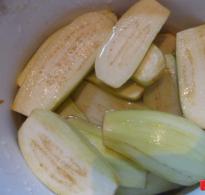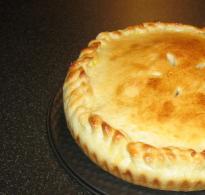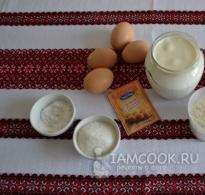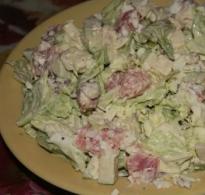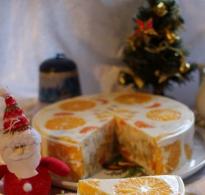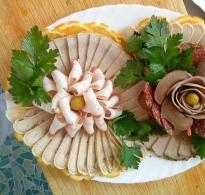General technology of dietary dairy products. Acception production technology
In the present, time produces more than 300 species. All of them are produced by driving raw materials with clean bacterial frans. Under certain conditions of the microflora turns t. And. Secondary microflora. It gives products specific taste and smell. Use: Mezophilic streptococci, thermophilic streptococci and wands, yeast. Their use in various combinations allows you to obtain a large amount of sourness. Products.
In the production of fermented milk products, milk is used in which the protein content is not lower than 3%, lactose is at least 4.5%. In addition, in the production of cottage cheese, the renewed milk rolleriness is determined by the rennet method, it must be 1 or 2 classes. Supplement production. Products are carried out by 2 ways. 1) Tank 2) thermostat. With reservoir, large industrial areas are used, but this is a relatively cheap method. The thermostat method requires additional, cost-effectiveness, but requires less production. Square. Scheme of the production of dairy products with a thermostat.
Acceptance and quality assessment of raw materials, reservation, heating and cleaning, normalization by fat, pasteurization, cooling up to 1 fermentation (for the mesof. 30-32 ° C, for thermophil. 40-42 ° C, for kefir fungus 20 ° C), packaging , entering the starter (in each container), hermetic capping, riding and ripening in a thermostat chamber, cooling (up to T 6-8), storage and implementation. (72 hours) Shelf life is sour cream 5 days. Cottage cheese is produced by 2 ways: traditional and separate. In addition, depending on the method of rolling milk, cottage cheese is produced: with an acidic way (only soldered) with an acidic way (in addition to the spaw-ski, the rennet enzyme and calcium chloride are made). Pulks of fermented milk products: flavors and smell vices. Overly sour taste and smell. Violated rolling and fermentation modes, as well as transportation and storage. Feed flavor and smell. The weak taste and smell. Determined, violation of technological modes of rolling. Furious taste and smell. In high-neighbor products. Color vices: uneven. Consistency vices: inhomogeneous with serum separation - violation of transport and storage modes.
55. Technology production of butter.
For the production of butter, milk is used not lower than 2 varieties, cream 1 or 2 varieties. In the cream of 1 variety, mechanical pollution, protein flakes, traces of fooling are not allowed. The cream of 2 varieties is allowed a weakly expressed feed taste and smell, separate protein flakes. The temperature of the incoming cream 1 variety should not be above 10 ° C, 2 grades are not higher than 15 ° C. Most preferably use raw materials with high fat content.
Production of butter is carried out in 2 ways: 1) knocking; 2) conversion of high-liquid cream
Technological scheme for the production of butter by the method of knocking. Acceptance and quality assessment of raw materials, cooling (up to 14-6 ° C), reservation, heated (30-35 ° C), cleaning, separation (creation of cream (32-35% fat), thermal treatment of cream (pasteurization), physical maturation Cream (low-temperature processing), cream knocking, oil grain processing, patch separation, oil washing, mechanical oil treatment, packaging, storage and implementation.
Cleaning, separation is carried out: in open or closed separators. The fatty of the resulting cream depends on the type of oil produced.
Thermal treatment is carried out in order to destroy all the harmful microflora, as well as the inactivation of enzymes that accelerate oil damage. Pasteurization lower than at 85 ° C is not conducted. For cream I variety I pasteuris. It takes 85-90, in winter 92-95. For oil produced from cream 2 varieties T, regardless of the time of year, 95, C before. Deodoracy cream. Cream must be necessary to pass the stage of physical maturation. When making a cream that did not pass this stage, the product is soft with a gas-powered consistency with a large fat in the poch.
Singing cream is carried out in the oil producers of continuous or periodic action. The mixing temperature of the cream depends on the time of year, the content of fat in the cream and on the degree of curing fat in the cream. For summer, it is equal to 7-12 ° C, winter 8-14. The recruitment process can be divided into 3 stages: i) the start of the knocking (the observation window of the oil is covered with a film of cream). 2) the formation of individual oil grains (the window brighten 3) is finished, the formation of oil grains (the window is transparent and visible oil grains). Duration of knocking down periodic oils 20-30 minutes. Oil grains separated from the stuff is washed 2 times with drinking water t which 2 ° C below T knocking, to remove from oil grains of lactose residues, protein, min. substances. The volume of washing water is 50% of the initial volume of the cream. The washed grain is pressed, formulate. For this, the wrapper is transferred to the roller mode, a duration of 5 minutes.
The packaging is carried out at the outlet of the wrapper, both in cardboard boxes and in small container on 180-200 gr. Be sure to point on the packaging: product marking, name, GOST, manufacturer, conditions and storage, composition and value.
Store at 14-6 ° C no more than 20 days. In the frozen form, at t -20, -25 ° C can be stored up to 3 months.
Creamy oil vices: flavors and smell, consistency, color. Taste and smell: bitter, ruddy, empty, feed odor. Consistency; Crazy, unnecessarily soft, too wet. Color: uneven, top layer yellow and visible separate pieces of fat).
In Russia, the culture of the consumption of fermented milk products is highly developed. Everyone knows that kefir, yogurt, ryazhenka is useful for digestion and immunity, so the demand for these goods will always be high.
There are the following groups of ferocular products:
- liquid and semi-liquid structure (kefir, yogurt, yogurt, ryazhenka);
- high protein (cottage cheese);
- high fat (sour cream).
Among these products, separate types of goods can be distinguished, depending on the fat content and the raw materials used:
- kefir produced 1; 2.5; 3.2% fat, low-fat, Tallinn (1% and low-fat), fruit (1 and 2.5% fat), bio-kefirs (1%, 3.2% fat content containing bifidobacteria).
- prostokvash It happens an ordinary, swallowskaya prokobvash, acidophilic, southern.
- yogurt Faithfulness are: dairy - 1%, 1.4%, 1.5%, 2.5%; Creamy - 4.7%, 8%, 10%. According to the thermal processing mode - alive and inanimate. According to the presence of additives - fruit, berry, natural.
- cottage cheese There is fat (18% fat), bold (9% fat), low-fat, soft dietary (4 and 11% fat), soft dietary fruit-berry (11% fat), peasant (5% Lost), etc.
- sour cream Release dietary, with 10, 20, 25, 30, 36, 40% fat, acididophilic, amateur, etc.
Also produce ryazhenka, vareta, curd cheese.
Technology
The production technology of fermented products is based on the process of fermentation of raw materials under the influence of fermented bacteria. Almost every stage of manufacturing the same for all types of dairy products.
The first stage is acceptance, preparation and purification of dairy raw materials. Next, the milk passes normalization to establish a certain mass fraction of fatty. To eliminate fat residues and ensuring homogeneous composition, milk is homogenized. Homogenization mode for fermented milk products - 12.5-17.5 MPa.
The next step is pasteurization, which is carried out at a temperature of 85-90 degrees for 5-10 minutes. During this operation, a favorable medium for lactic acid bacteria is created. After cooling, the milk is added to the milk from thermophilic or mesophilic lactic acid bacteria, bifidobacteria, amount of approximately 1-5% of the volume of raw materials. Next, the process of roding can be done in two ways:
- thermostat. With this method, starters are placed in the containers (bottles, packets) located in thermostat chambers where the product is ripening.
- reservoir. Raw materials are located in a large tank, and after ripening is packaged in container.
The duration of a rowing depends on the type of products and the break, it ranges from 4 to 12 hours. Combining temperature 20-43? P. The preparedness of the product is determined by the nature of the clot and the level of acidity, which should be less than the acidity of the finished product.
The final stage is quality control, tara marking and deposit or shopping.
In the production of certain types of fermented products, there are various features of the technological process:
Sour cream. For the starter, the following bacteria introduces: mesophilic homofermental crops (packing (4 doses) for 2000-2500 l.) And thermophilic crops (packaging (4 doses) per 1000-1200 l.). Ripens from 12 to 48 hours. Acidity: Sour cream 30% greediness of the highest grade - 65-90 ° T, first grade - 65-110, 36% fat - 65-90, 40% fat, 55-90, 25% fat - 65 -100, 20% fat content - 65-100, 10% fat 70-95.
Yogurt. Raw materials are fed by pure cultures of the Bulgarian stick and thermophilic streptococcus. Duration of a rush of 4-8 hours before the formation of a clock. Acidity - 80 ° t.
Prostokvasha, Ryazhka, Snowball. Zakvaska: Clean cultures of the Bulgarian stick and thermophilic streptococcus or pure cultures of thermophilic streptococcus. Ripen 9-13 hours. Sugar add sugar, fruit syrups. Snow acidity 80-1100 ° T, ripples - 75-100 ° t.
Varets. Zakvaska: Clean cultures of thermophilic streptococcus. Duration of ripening 9-13h.
Kefir. It is produced from milk, fermented with kefir fungus or specially selected starters. Maturation passes at 14-16 ° C, 9-13 hours. Acidity - 85-120 ° t.
Acidophilus. Zakvaska: Acidophilic wand, kefir fungi and lactic acid streptococcus. Combination temperature 30 - 38 ° C. Acidity - 75-120 ° t.
Cottage cheese. Normalized or skimmed milk is used for production. Zakvaska: Mesophilic homofermental cultures (packaging (4 doses) for 2000-2500 l.). With a renewed method, a dry rennet enzyme is added 0.25-0.5 g (strength 1: 750,000) and be kenned for 10-14 hours.
Acid products are stored at a temperature not higher than 8? P. Shelf life: Sour cream - in hermetically packaged package 14 days, in a leakage - 72 hours from the end of the technological process, Prostokvasha, Ryazhenka, kefir, cottage cheese for 36 hours, live yogurt - from 72 hours to 30 days, "Non-resident" - Up to 6 months, cottage cheese - 2 months.
When assessing the quality of products, it is taken into account:
- taste and smell. They should be clean, fermented, fervent, without extraneous tastes and smells;
- colour. It must be milky white, uniform over the entire mass;
- consistency and appearance are homogeneous, with a disturbed or undisturbed clock. Gas formation is allowed in the form of unit bubbles caused by the action of frkic microflora (Source GOST52687-2006).
Equipment and raw materials
The production line for the production of fermented equipment includes the following equipment:
- long-term pasteurization bath. Its value fluctuates from 150 thousand rubles to 1 million, depending on the size.
- homogenizer. Cost from 340 to 800 thousand rubles;
- pump. Cost from 19 to 55 thousand rubles.
- the reservoir (volume of 10 cubic meters) is about 600 thousand rubles, plus the control panel of 45 thousand rubles;
- milk cooler - about 200 thousand rubles;
- separators - about 80-200 thousand rubles;
- reception capacity (volume of 1000 liters) - about 180 thousand steering wheel
- the ribbon conveyor is from 23 thousand for a temporon meter.
The cost of milk is about 13 rolls per liter. The price of fermented bacteria is about 200 rubles for one bottle (500 grams).
Consumption of raw materials for one liter of products: sour cream - 8-10 liters of milk, cottage cheese - 4-5 liters, kefir - 1, 5-2 liters, rippy - 2-3 liters.
Requirements for the premises and staff
Plant for the production of fermented milk products should include a separation of milk acceptance, production compartment with reservation areas, manufacturing and packing of milk pasteurized, refrigeration compartment, with a separation of the shipment of finished products, domestic premises, a laboratory, an inventory and packaging department. To maintain the equipment it will be necessary to hire a minimum of 4 people.
Investment and payback
Initial investments necessary for opening a business for the production of fermented milk products will amount to about 6 million rubles. The average cost of high-quality products from fresh fatty milk: sour cream - about 150 rubles / l, cottage cheese - about 76 rubles / l, kefir - 23 rubles / l, ryazhenka - 27 rubles / l. Market value: sour cream - 200-300 rubles / l, cottage cheese - 80-105 rubles / l, kefir - 28-32 rubles / l, ryazhenka - 35-40 rubles / l. This will pay off at about 2 years.
Sales
When implementing fermented products, it is important to take into account many of the features. It should be remembered for seasonality, in winter, demand is higher for this product than in summer. But, at the same time, in the summer there are more kefir, and not milk. Depends on sales even from the day of the week. On Friday and on weekends, fermented milk products buy more than on weekdays. It is important to take into account, since the dairy products refers to a perishable and need to be quickly implemented.
You should also think about the design of the packaging, its convenience. If we talk about the demand for certain types of goods, then traditional kefir and ryazhenku are more popular than yogurts and glazed raw materials. But recently there has been a tendency to increase the demand for yogurt, as the audience becomes the active consumer, which has grown on this product.
CEROUKHIN Kristina
- Business Plans and Manuals Portal
General technology of dietary milk products
Common in the manufacture of all fermented milk drinks is the ribbon of the prepared milk by swax and, if necessary, maturation. The specificity of the production of individual products differs only by temperature modes of certain operations, the use of breaks of different composition and making fillers.
For a long time, all fermented milk drinks were produced by a thermostat method at which the fermented milk is spilled into a small container and be keen at optimal temperatures for each product in the thermostat chamber. After the bunch is founded, the product is sent to the refrigeration chamber, where it is cooled and, if necessary, withstands some time for maturation.
In accordance with the reservoir method (M. G. Demurov), the rivation and ripening of the product is carried out in stirring tanks. This reduces production areas and labor costs.
For the production of dietary fermented milk drinks, milk is not lower than the second grade, acidity is not higher than 19 ° C, and the cream - plasma acidity is not higher than 24 ° t.
Normalized milk pasteurize at temperatures of 85-87 ° C with an excerpt for 5-10 minutes or 90-92 ° C with an excerpt of 2-3 C for more complete destruction of microflora, the destruction of enzymes, activating the development of frkic microflora, improving product consistency. Under these conditions, denaturation of serum proteins occurs, as a result of which the hydration properties of casein and its ability to form a more dense bunch, well holding
serum. This contributes to the participation of denatured serum proteins in the formation of the structure of the dairy bunch.
Thermal treatment is usually combined with milk homogenization at a temperature of 60-70 ° C and a pressure of 12.5-17.5 MPa, which provides more homogeneous and dense consistency, and in the stirred state - more viscous, prevents sucks of cream at best serum retention. In the production of fermented milk drinks, homogenization is required, since sucks of cream is inevitable with long conversion and cooling processes.
Then the milk is cooled to the optimal flow temperature and it immediately contributes to Zavskaya to prevent the development of foreign microflora. Explosive usually make a mixer using a dispenser.
When developing fermented fermentation products: Mesophilic (LC. LACTIS) with optimal developmental temperature of 30-35 ° C and thermophilic (STR. Termophilus) with optimal development temperature 40-45 ° C.
To give a bunch of a sour cream-like consistency, creamy streptococcus cream (Lc. Cremoris), the optimal developmental temperature of which is 30 ° C. Some starts include fragrav-forming streptococci (STR. Citrovorus, Str. Paracitrovorus, LC. Diacetilactis, LC. Lactis Subsp. Acetoinicus, LC. Lactis Subsp. Diacetilactisfa. Enterococci. In the process of its life, except for lactic acid, they form volatile acids, Carbon dioxide, alcohols, ethers, diacetyl, informing the product specific odor, which gives certain properties of consistency. These microorganisms are capable of 1 vitamins biosynthesis, amino acids, carbon-containing polymers.
The combination of starters give certain qualities with a dairy product. The optimal temperature for their development is 25-30 ° C. Microorganisms can increase the acidity of the drink to 80-120 ° t.
The stronger acid formers are lactic chopsticks. Of these, the Bulgarian wand (L. acidophilum) and acidophilic (L. acidophilum) and acidophilic (L. acidophilum) and others are widely used in the production of starters (L. acidophilum) and others and the limiting acidity of milk to 200-300 ° T.
The composition of the start-up of some fermented milk yeast, providing alcohol fermentation, as a result of which the beverages acquire a slightly sharp, pinching taste and a foam consistency.
The quality of fermented source drinks to a large extent depends on the quality of the solder applied. It should have a dense homogeneous clot, a pleasant taste and smell, optimal acidity (streptococcal - not higher than 80 ° T, rolling-shaped - not higher than 100 ° T). With increased acidity, the extensive activity is reduced, which increases the duration of the coagulation of milk and worsens the quality of the finished product. Explosive is made depending on its activity in an amount of from 1 to 5%.
The milk is fed at the formation temperature before the formation of a gentle, sufficiently dense clot, without signs of separating serum, and to acidity is slightly lower than in the finished product.
At the end of the roding, the product is immediately cooled. With a thermostatic method, it is sent to the refrigeration chamber, where it is cooled to a temperature of 6-8 ° C. Move the product should be careful to prevent the tender throat. A clutch obtained by the reservoir method is cooled at a mixture in the same tank of the feed of ice water into the reservoir shirt. At the same time, the properties of the thorough bunch change somewhat.
The lactic acid process with a decrease in temperature weakens, proceeds slowly, and the optimal acidity is gradually achieved for this type of product, and at 8-10 ° C, acid formation is almost terminated. The swelling of proteins is also occurring, which leads to the binding and decrease in free moisture and sealing the clock.
Mixed fermentation products (kefir, kums, acididophone milk) after cooling are matured in refrigeration chambers (with a thermostatic method) or tanks. In this case, the lactic acid process fades, the yeast in an acidic medium is activated, alcohol fermentation occurs with the accumulation of alcohol, carbon dioxide, etc., which give these drinks specific properties. The ripening of the product in tanks lasts depending on the type of product from 12 hours to 3 days at a temperature of 8-10 ° C. After ripening, it is bottled and sent for storage in refrigeration chambers.
In order to better use production areas in some countries (Bulgaria, Hungary, etc.), the bowering and cooling of fermented fermentation beverages are carried out in one chamber by changing the air temperature in it.
Storage to the sale of dietary source drinks is carried out in refrigeration chambers at a temperature of from 0 to 6 ° C and a humidity of 85-90% in a strict sanitary and hygienic mode. They are produced from enterprises at a temperature not higher than 8 ° C after checking the physicochemical and organoleptic indicators of each product batch.
Efficiency products are produced in two ways: thermostatic and tank.
Scheme: Milk Acceptance - Normalization - Pasteurization - Cooling - 1 (reservoir) Flooding in the tank - Combination - Cooling - Maturation - Packaging - Storage - Implementation. 2 (thermostat) Flooding in a thermostat and bottling into the consumer container - a rush in a thermostat - cooling in a refrigeration chamber - ripening - storage - implementation.
Acceptance and evaluation of milk: the mass fraction of fat, density, acidity, temperature, organoleptic indicators is determined. Use raw materials: not lower than 2 varieties with acidity less than 20GRADT, reductase sample not lower than 1 class, fur. Pollution not more than 1 group, density not lower than 1.027g / cm3. Skilled milk: acidity less than 20Gradt, density not lower than 1.030g / cm3
Milk cleaning: spend with 43Grads. Homogenization: at the R-15MPA, 45-48Grads. Pasteurization: 85-87Grads - 10-15min, 92Grads - 2-8min. Cooling? to the temperature of the brewing. Flooding: Explosives 3-5% of total, mixing 15min. Combination: 10-12 hours, the end of the roding is determined by acidity (65-90GRADT) and the density of the clock. Cooling: ice water during stirring (30-60min), before receiving a homogeneous mass. Making fillers: In the partially cooled clot introduce fillers, mix, we are submitted to bottling. Storage: Not more than 36 hours at 6 grades since the end of those. percent
Technology preparation of liquid dairy products.
Drinks dairy TU 46.073-2003
Developed by the National Association of Milknics of Ukraine. It applies to sour-milk drinks, which are beaten by a special Zavskaya with the addition of or without sugar, stabilizers, dry milk, natural fruit fillers, with further thermal processing.
Assortment: Jubilee Beverage (1, 2.5%); Drink "Jubilee" with fruit filler (1, 2.5%); Drink "Snowball" (1.0, 2.5, 3.2, 3.5%); Drink "Fruit-berry snow" (1%); Yogurt is non-residential (1.5, 2.5, 3.2, 3.5%); Yogurt fruit-berry (1, 3.5%).
Organoleptic indicators. Appearance and consistency: homogeneous, moderately viscous. With a reservoir method - with a disturbed bunch; With thermostat - with undisturbed. With the presence of soft particles of fruits and berries, serum separation is allowed not more than 2-3%. The drink "Snow" is a slight torment.
Taste and smell. Pure fermented milk, moderately sweet, with a taste and smell of the made filler.
Colour. Depends on the filler or milk-white.
Acidity. Jubilee - 80-110GRADT (pH - 4.6-4.0); "Snow" - 80-120Gradt (pH - 4.6-3.9); Yogurt - 80-140Gradt (pH - 4.4-3.8)
Sugarozes are added more than 7%, jams - more than 4%.
Microbiological indicators. Bacteria of the group of intestinal sticks are not allowed in 0.1 g of product. Salmonella are not allowed in 25 g of product. Golden staphylococcus is not allowed in 0.1 g of product. The number of milk-acid microorganisms at least 1 million in cm3.
Storage. At a temperature of 4 + -2gards. If the product without stabilizers and is not more than 36 hours. The devices of stabilizers, but in hermetic packaging - no more than 3 days. With a stabilizer and in hermetic packaging up to 14 days.
This is an acidic drink obtained by driving the milk of Ozvasha in kefir fungi.
Assortment: low-fat, 1%, 2.5%, 3.2%.
Acidity 850120Gradt.
Appearance and consistency. Uniform, with a broken clock with a reservoir method of production and with a non-thermostatic method. Gas formation is allowed, as separate bubbles.
Taste and smell. Clean milk, refreshing, slightly sharp.
A minor separation of serum is allowed - no more than 2%. Microbiological indicators. Bacteria of the group of intestinal sticks - are not allowed in 0.01 g of prod. Pathogenic microorganisms are not allowed in 1 g of product.
Storage time as in ferocular products.
The diagram of the direction of processing of the milk to kefir.
Milk 3.4% - Normalized mixture - (Zakvaska 5%): 1 - kefir 1%; 2 - kefir 2.5%; 3 - kefir 3.2%.
Equal milk drink produced from bustled milk powered by clean cultures of thermophilic lactic acid streptococcus, with the addition of or without a Bulgarian stick.
Assortment: 1%, 2.5%, 4%.
Acidness 70-110GRADT.
Appearance and consistency. Uniform, the presence of foam is allowed.
Taste and smell. Clean, fermented, with a pronounced flavor of pasteurization.
Colour. Light-cream, due to the presence of smalltonine, due to the mass of milk.
Technological features. The pasteurization temperature is 95-98Grads with an excerpt of 3-5 hours, in order to produce a light film and a specific taste.
Storage. In the presence of stabilizers not more than 14 days.
The requirement of raw materials is the heat resistance of milk.
Prostokvash.
Acid product produced by both milk, produced by it with clean crops of lactic acid bacteria.
Ordinary prostow.
Prepare only thermostat. Zakvaska contains a thermophilic lactic acid streptococcus and a Bulgarian wand. Fucking temperature - 40grras. The duration of the rush is 3-4 hours. It is formed a dense clutch without gas formation. Taste and smell - pure milk. Color - milky white. Acidness 80-130Gradt. Storage: at a temperature not higher than 8GRADS - 36 hours.
South Prostokvash.
Thermostat method. Zakvaska is the same and + dairy yeast. Cutting 6-8 hours. Color - milky white. The taste is pure milk, alcohol flavor. Circuit dense. In the presence of mucous strains can be a damaging consistency. Acidness - 90-140Gradt.
Acidophilic Prostokvash.
Zakvaska is an acidophilic stick, a lactic acid streptococcus. The taste is fermented. Delicate consistency, in the presence of mucous strains - pulling. Acidity - up to 140Gradt
Taste and smell: pure fermented milk, with a pronounced flavor and aroma of pasteurized cream (diacel, acetoin) is formed during the pasteurization of the cream). All species are allowed in a weakly fodder taste (especially in the winter-spring period), and a small bitterness.
Color: white with cream tint.
Physical and chemical indicators.
Acidity: 10,15.30% - 60-90GRADT; 20.25% - 60-100Gradt. Phosphatase is absent. The release temperature from the plant is less than 6 grades. For sour cream produced using dry dairy products, an increase in the upper acidity limit to 10groldt is allowed.
Microbiological indicators.
Bacteria of the intestinal sticks group are not allowed at 0.001 g of product. Pathogenic microorganisms are not allowed in 25 g of product. Golden staphylococcus is not allowed in 1 g of product.
Scheme of milk processing directions on sour cream.
Milk 3.4% (on separation) -: 1 - skimmed milk residue; 2 - cream (for normalization) -: 1 - sour cream 10%; 2 \u003d (fillers) dessert sour cream.
These products can be prepared by thermostatic and reservoir methods. With thermostat, milk methods are immediately poured into bottles, banks or packages and placed in thermostats for ripening, ripening (kefir, cows from cow's milk). The finished product is sent to refrigeration chambers. All liquid milk products can be prepared by a thermostat.
With a reservoir method of preparation of products after entering the crush to milk, the process of ribbons, ripening (kefira, kumsa) and the cooling of the product is carried out in the same large capacity tanks, and only the finished, cooled product is bottled, packets. The reservoir method can be prepared by acidophilic, kefir, acidophile and yeast milk, rippy, yogurt, kums from cow's milk. This method allows to reduce the cost of the product 1.5 times and 35 ... 37% increase labor productivity. In addition, with a reservoir method for the manufacture of fermented milk products, the smallest contamination of their foreign microflora.
Reception and sorting milk. A number of fermented milk products (sources, kumys) can be developed from milk of many agricultural animals. In the planting of the dairy industry, they are made of cow milk .. for the production of fermented milk products, only milk of higher, I and II varieties are suitable.
Normalization of milk. Certain mass fraction of fat. Therefore, milk intended for processing should be normalized. Normalization is produced by the same methods that are used in the production of drinking milk.
Pasteurization of milk. For the preparation of all types of prokovashchi, with the exception of ripping and varenz, milk is pasteurized at a temperature of 92 ± 2 ° C with an excerpt 2 ... 8 min or at 87 ± 2 ° C for 10..15 min.
Homogenization of milk. It is usually combined with pasteurization. In the production of fermented milk products, the tank method is determined by the homogenization of milk. It is desired and with a thermostatic method, since homogenization prevents serum isolate and improves product consistency.
Cooling milk. After pasteurization and homogenization, milk is immediately cooled on the coolers to the temperature of the brewing of the lactic acid or kefir. Rodskaya.
Floating milk. In the cooled to the required temperature, the milk is made by 3 ... 5% of the frkic oxygen acid, the amount of which depends on the type of ferocular product. Before use, Zapvask is thoroughly stirred, then poured, stirring milk.
Milk rolling. Of great importance is the temperature, it must be optimal for the development of the corresponding types of bacteria.
With a thermostatic method Product production in bottles or packages produce immediately after brewing milk; The product's rod to readiness occurs in bottles (packages) placed in the thermostat. The finished product is placed in refrigeration chambers, where it is cooled to a temperature of 6 ± 2 ° C and withstands 12 ... 18 hours for ripening. During this period, bacteria that give the product aroma and specific taste are developing, the product acquires a dense consistency as a result of protein swelling.
When producing a product Reservoir method Combination is produced in two-wall universal containers or in containers with thermal insulation, which makes it possible to maintain the appropriate temperature within certain limits. The end of the fusion, regardless of the production method, is determined by the acidity, density and consistency of the clock.
A clutter must be even, sufficiently dense, homogeneous, to have acidity for all types of 35 ... 80 ° T, for rip-iron 65 ... 70 ° t.
Storage of cooled dairy products. It is not allowed to be stored for more than three days at a temperature of 6 ± 2 ° C. Regardless of the method of production of kefir after roding, it is cooled to 6 ... 8 ° C and at this temperature are subjected to maturation (excerpt). Weak kefir matures day, medium - up to 2 days and strong - 3 days.
Realization of dairy products It is made by shops where they are delivered by observing sanitary and hygienic requirements caused by the relevant instructions and directions.

